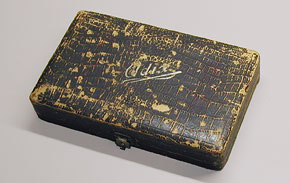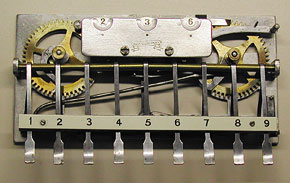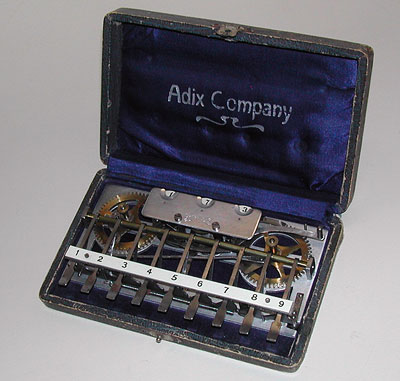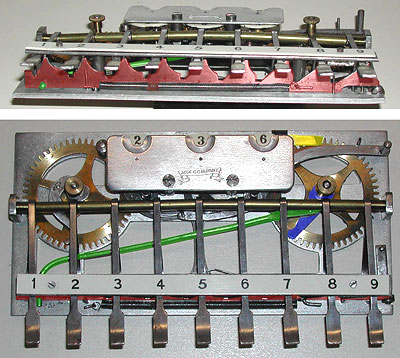 |
|
|
|

|

|
Blue Velvet |
|
|
|
|
limited, but faster perhaps than using your head for long sums -- especially when you note that this device has a true keyboard, instead of the cranks, slides and dials of other small adders of its era. Depress any key, and the result readout instantly increments by the appropriate number. |
|
|
|

 Click a photo to enlarge |
|
|
|
The mechanism is fairly simple: The depressed key pushes to the right the serrated plate under it (tinted red in the photo below). The cutout under each key has a different slope, so the plate gets |
|
|
|
This charming device was actually quite modern for its time. Made in Mannheim from 1903 by Pallweber and Bordt, it is the first application of that new material, Aluminum, to computing machinery. It was made in a number of models, and this is the first one to include a Reset mechanism, the lever at top right. Strangely, and by design, this lever only zeroes two digits of the result readout; one must first add the ten’s complement to bring the units digit to zero, then pull the lever to clear the higher two digits. This is still better than the earlier models, which required you to twiddle the large brass gears while depressing the “1” key in order to zero the readout; this required access to the gears, which is why the mechanism was not enclosed. Later models have a Bakelite cover over their innards -- efficient, but much less pretty... |
|
|
|
Exhibit provenance: eBay, from a seller in the Adix's country of origin, Germany. More info: |
|
|
|
|
|
|
|
Home | HOC | Fractals | Miscellany | About | Contact Copyright © 2007 N. Zeldes. All rights reserved. |
|

